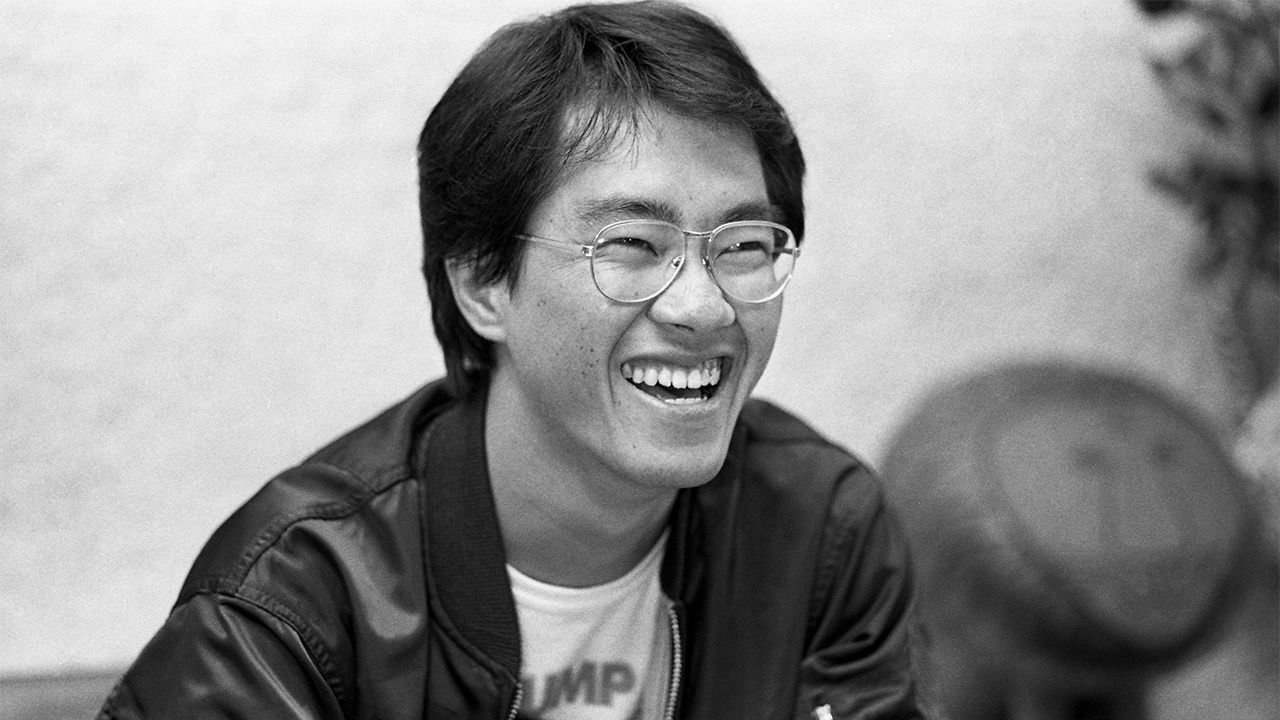
Remembering Legendary “Dragon Ball” Creator Toriyama Akira
Manga Anime Society Culture- English
- 日本語
- 简体字
- 繁體字
- Français
- Español
- العربية
- Русский
The Quintessential Shōnen Manga Moment
First, raise both hands. Keep them loose for the moment. Then turn one towards the sky and the other towards the ground. Draw the palms close together and whisper, “ka . . . me . . .” filling your body with power.
But wait! Don’t release it yet.
Palms should be spread wide, touching at the wrists. Now, draw them toward the waist: “ha . . . me . . .” go the next syllables. You are in total control of the energy within you. Your body starts to heat. Prepare for impact by putting one leg back for support. With the shout of the final syllable—“ha!”—release that energy toward your opponent.
Overexert yourself, and you’ll wipe out a mountain. That’s what Master Rōshi, known in Japanese as Kame Sennin, the “Turtle Hermit,” says of the Kamehameha technique he perfected.
Such is the signature finishing move in the manga Dragon Ball, but it’s no exaggeration to say that nearly every man of a certain generation has imitated the pose at least once. Yours truly among them. The spirit of shōnen manga—as comics for boys are known in Japanese—runs strong in “Dragon Ball,” which is why it captured the hearts of so many readers.

Marcos Junior (right) and fellow Yokohama F. Marinos teammates celebrate a goal on August 12, 2021, at Nippatsu Mitsuzawa Stadium, Kanagawa Prefecture. The beloved Kamehameha pose transcends generations and borders. (© Jiji)
The creator of that masterpiece of a manga, Toriyama Akira, passed away on March 1, 2024, from an acute subdural hematoma. He was only 68 years old. The news of his death made headlines around the world, leading stunned fans and creators alike to offer words of condolence and tribute.
On the official website of Shōnen Jump, the magazine where Toriyama debuted and serialized hits including Dr. Slump and Dragon Ball, those who worked closely with the artist have posted tributes. The manga artist Oda Eiichirō, creator of the series One Piece, wrote:
He took the “baton” from the era when people believed manga would make you stupid, and created a world where manga can be enjoyed by children and adults both; he showed us the dream that manga had that power to go forth into the world. To me, it was like watching a hero blaze a trail.
Italy’s top-tier soccer league, Serie A, also expressed condolences on its official Twitter/X account with the message “Raised on Calcio [soccer] and Dragon Ball.”
Meeting a Legendary Editor
Toriyama was born in 1955 in Aichi Prefecture. He loved drawing from a young age. At that time, there was a shop in the neighborhood where an older man taught children how to draw, and he held a drawing contest with characters from the Disney film 101 Dalmatians. Toriyama, just 6 years old at the time, said he was shocked by the skill of Disney’s artists. He submitted his own illustrations to the contest, and saw them selected. He earnestly drew pictures and entered the contest. When they were accepted, Toriyama was overjoyed, and became obsessed with drawing.
In elementary school, Toriyama was a voracious reader of manga. But as he entered junior high, his interests shifted to live-action dramas and movies, ranging from Japanese tokusatsu special-effects series like Ultra Q and Ultraman, spaghetti westerns, and films like Star Wars. “I’ll watch anything but romance,” as he put it in an interview.
Come to think of it, Dr. Slump famously features characters resembling Ultraman or real-world celebrities like Clint Eastwood’s Dirty Harry. Toriyama’s second attempt at a serial was a parody of Star Wars. And it’s true that romance plays a minuscule role in the Toriyama oeuvre.
Toriyama attended a high school with a design department; after graduating, he planned to pursue a career in graphic design, and secured a job at an advertising agency. He spent long hours drawing illustrations, working overtime, and being scolded for arriving late to the office. His work consisted of drawing quotidian items like socks and baby products for advertising flyers. But he credits the experience with helping him understand the “shapes of things,” which proved key in developing his style of drawing manga.
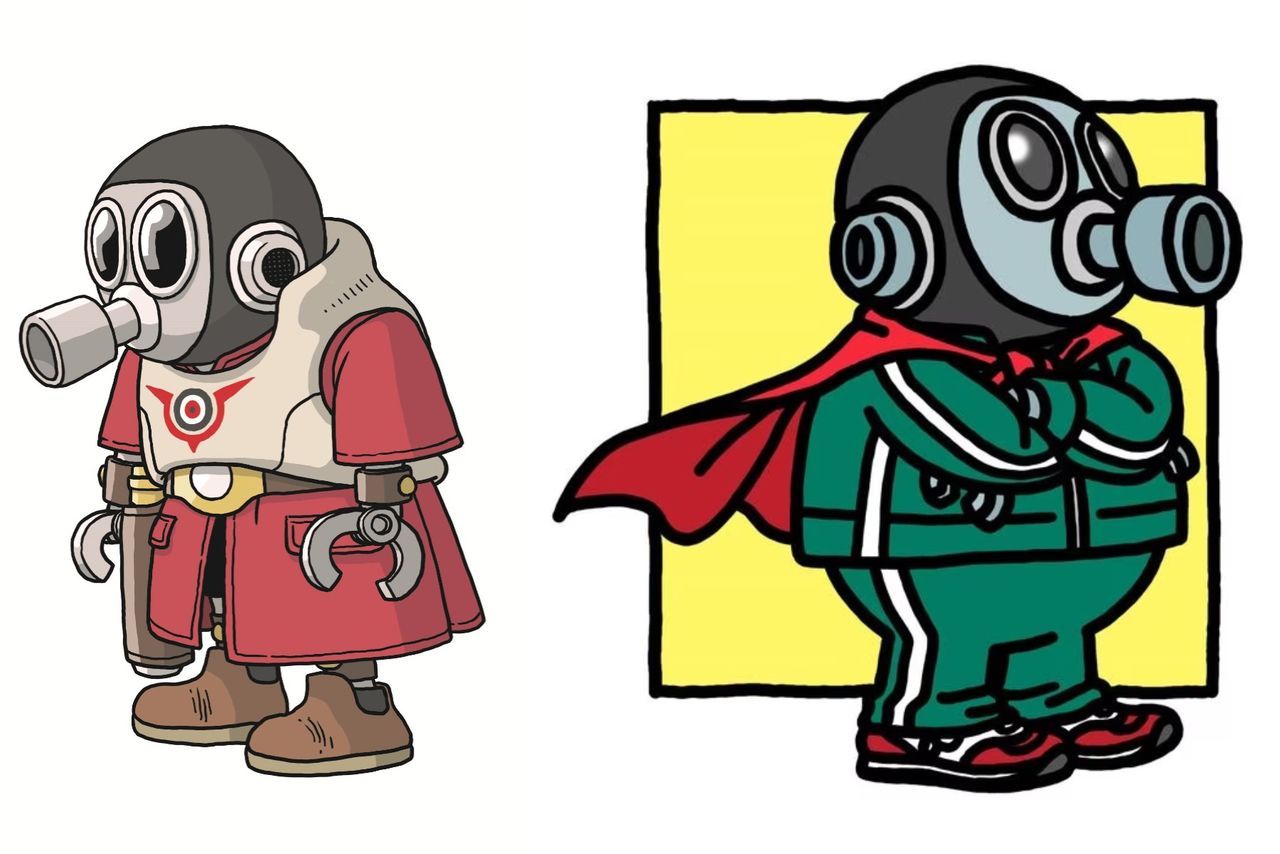
Toriyama’s self-portrait. The one at left is most recent; it was drawn during production of the Dragon Ball Daima anime series due to come out this fall. (© Bird Studio/Shūeisha/Tōei Animation)
Toriyama left the advertising agency two years later. This is when he hit on the idea of submitting manga to Shōnen Jump. “I was close to broke at the time, so I applied for the Jump Monthly Prize in hopes of winning the prize money,” he explained. “I apologize for my impure motives.”
His first submission didn’t win, but the second caught the eye of Torishima Kazuhiko, a beginning editor at the Jump editorial department. Torishima, who would later gain great renown as a legendary manga editor, was only in his second year of employment at the company. The two young men formed a partnership with the goal of “creating new manga.”
But success would not come easily. Toriyama’s rigorous “training” is well documented; it’s said that Torishima rejected some 500 pages of Toriyama’s ideas in the first years of their collaboration. However, over two years of intensive practice, Toriyama honed his skills and landed his first serial. It was called Dr. Slump, and proved an instant hit after its debut in 1980 and its anime launch in the following year.

Serialized from 1980 through 1984, Dr. Slump captivated readers from the very start with its unique world of characters. (© Bird Studio/Shūeisha)
Dr. Slump is a comedy set in the idyllic Penguin Village. The story centers on the adventures of a little robot girl named Norimaki Arare. Interestingly, Toriyama intended to position her creator, the scientist Norimaki Senbei, as the protagonist. Torishima quickly recognized Arare’s potential, though, and asked Toriyama to shift focus to her. But Toriyama rejected the idea. Torishima asked why. “Because it’s a boys’ manga!” retorted Toriyama.
Toriyama’s artwork, honed through years of graphic design, brought a colorful and poppy new sensibility to the manga world that captivated readers. It was the kind of art that didn’t only look good on the page, but in the real world, such as when printed on T-shirts. Dr. Slump emerged as a new kind of pop cultural icon, among young and old alike.
Its catchphrases, such as Arare’s “N’cha!” and “Bye-cha!” took off as well, making the series more than a hit—it became a social phenomenon.
Reimagining Journey to the West
After the megahit Dr. Slump ended its run in 1984, Toriyama took three months off before launching his next series, called Dragon Ball.
It began as a parody of the sixteenth-century Chinese classic Xiyou ji (Journey to the West), taking the form of a lighthearted adventure to find seven “dragon balls,” which, if gathered together, would grant their owner a wish from Shenlong, the Eternal Dragon.
Over time it evolved into a more battle-focused narrative, and its popularity continued to soar. Toriyama, who was a big fan of Bruce Lee’s Enter the Dragon and the films of Jackie Chan, had a knack for illustrating action scenes that resonated with readers.
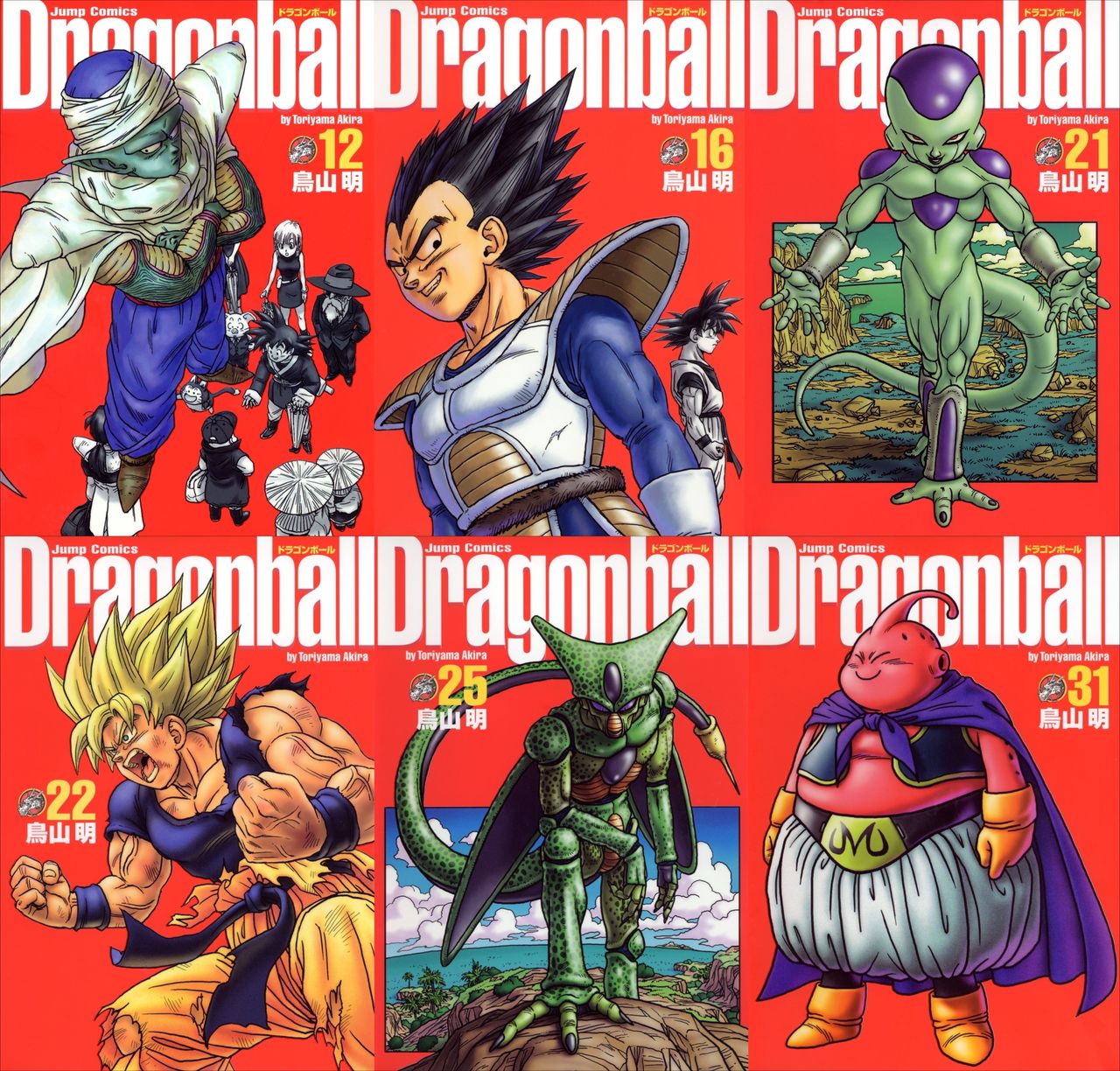
Seen on the covers of the collected editions are captivating antagonists. Clockwise from top left are Piccolo, Vegeta, Frieza, Majin Buu, Android Cell—and, of course, the hero Son Gokū, who becomes a Super Saiyan. (© Bird Studio/Shūeisha)
Following the path of Dr. Slump, Dragon Ball was also adapted into an anime series. Although the manga serial ended in 1995, the anime continued until 1997, gaining fans worldwide. In 2009, a live-action theatrical adaptation called Dragon Ball Evolution was released. The reception was mixed, but in 2013, Toriyama joined the production to create an animated film called Dragon Ball Z: Battle of Gods. It went on to gross approximately $500 million worldwide, proving the series’ enduring popularity and showing that Toriyama had lost none of his prowess as a creator.
Dragon Ball remains incredibly popular to this day. The latest series, Dragon Ball Daima, is set to begin in the fall of 2024. Toriyama is also celebrated for his work on the game series Dragon Quest, whose characters he designed. The game series has enjoyed huge popularity since its first installment in 1986, with the twelfth entry in the series currently in development.
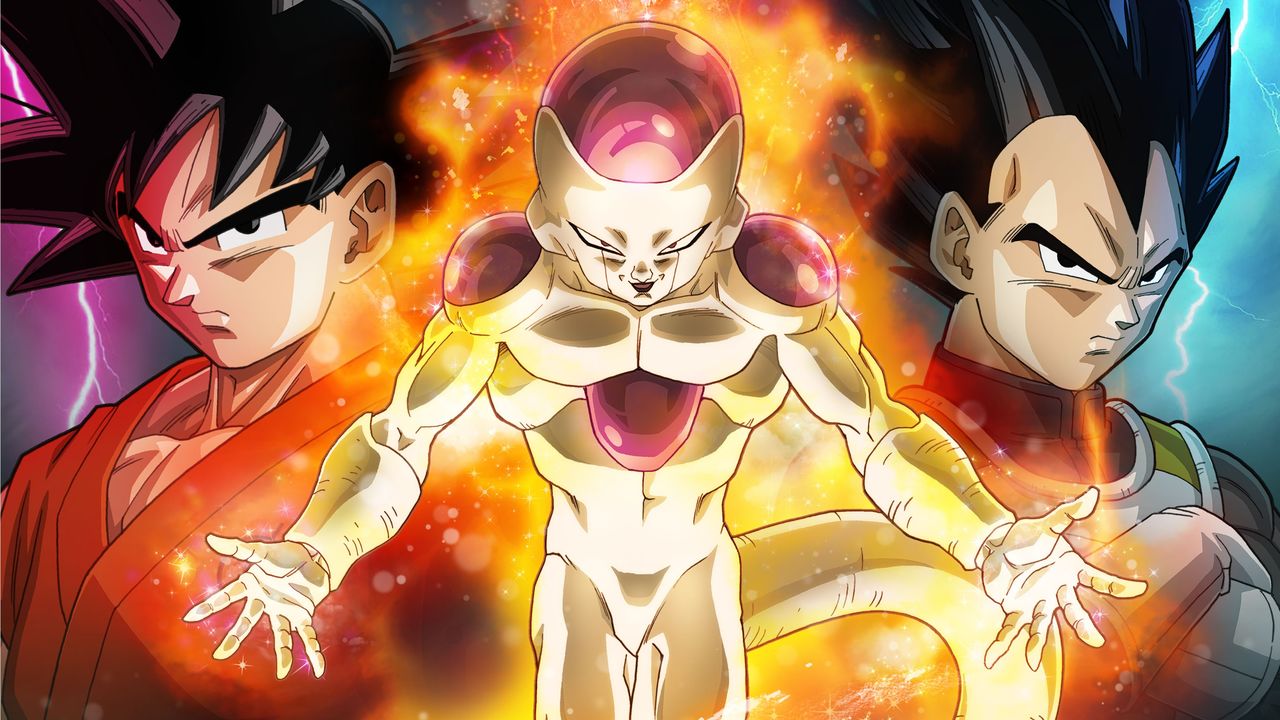
Dragon Ball Z: Resurrection “F,” released in theaters in 2015, marked the first time Toriyama was involved in scripting a Dragon Ball film. This marked the nineteenth film in the series. (© Bird Studio/Shūeisha; © 2015 Dragon Ball Z Production Committee)
Creation with Youth as Its Wellspring
Editor-in-chief of Shueisha’s weekly Shōnen Jump Horie Nobuhiko says, “Toriyama’s works unstintingly depict the dreams and wants of young boys, without resorting to preachiness. I consider him the epitome of boys’ manga.”
The game designer Sakuma Akira recalls his interactions with a young Toriyama Akira. Sakuma was a manga critic then, and wrote that “it feels like he’s remained a child, even as an adult.” But he meant this as high praise, for “sustaining such a childlike sensibility is actually quite difficult.”
But it is precisely because of this sensibility that Toriyama was able to transform the mainstream of boys’ manga in Japan.
But what is the mainstream of boys’ manga? Perhaps it could be called “adventure.”
When you think about it, the original 1977 film Star Wars, which Toriyama very much admired, is a story of adventure: the young Luke, who lived quietly in the countryside, sets off on a journey of discovery. Dragon Ball is much the same.
Setting off on an adventure. New worlds, new meetings, new friends. The excitement of discovery is what powers Toriyama’s work.
When asked what he thought was most important when it came to drawing boys’ manga, Toriyama answered: “It’s all about excitement and anticipation. When I draw, I remember the ways I felt about the world as a kid.”
Excitement and anticipation. It was important then, and it’s going to be important going forward, too.
There’s an anecdote that, I think, perfectly captures this sense of childlike wonder. It’s said that Toriyama came up with the Kamehameha by striking various poses by himself when no one was around. While this may seem like a small anecdote within his enormous achievements, it’s these little details that truly highlight his genius.
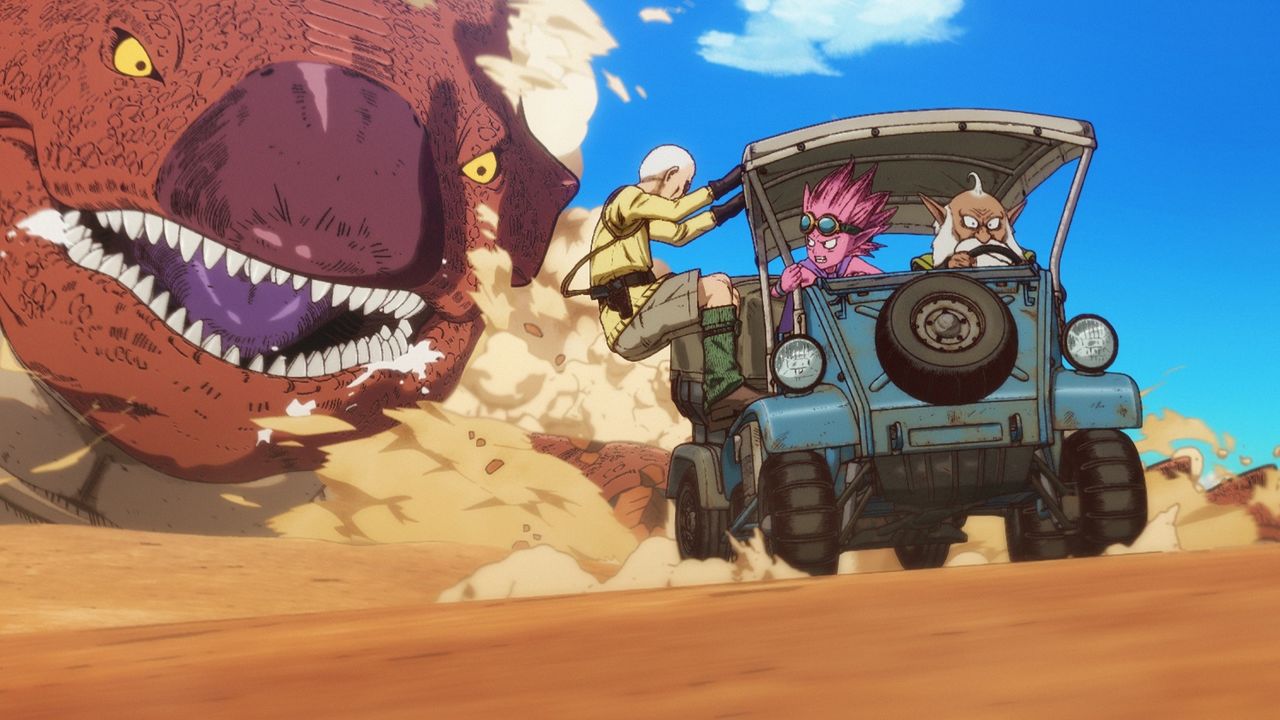
The 2023 movie Sand Land, based on Toriyama’s manga of the same name, was another of his adventure stories. (© Bird Studio/Shūeisha; © Sand Land Production Committee)
(Originally published in Japanese. Banner photo: Toriyama Akira appears in a portrait taken during the serialization of Dr. Slump in 1982. The creator was known for his reluctance to appear in the media. © Jiji.)
